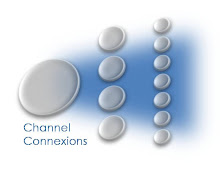 Strategic Planning seems like a logical place to start, but it is too often limited to just a few key stakeholders, and often does not consider the full suite of available data.
Strategic Planning seems like a logical place to start, but it is too often limited to just a few key stakeholders, and often does not consider the full suite of available data.Channel Connexions looks at strategic planning as a holistic cycle that starts with the application of market analytics. By continuously examining the data (quantitative and qualitative), you will be able to proactively identify new opportunities.
I think the most common mistake that channel marketing managers make is that once an opportunity is identified there is an immediate push to develop a campaign and execute. While the intent is correct, there are other considerations. Ensuring that back-end business processes are in place to support the campaign is extremely important. Can we track and measure the campaign? How will we deliver training and customer/channel communications? There are countless other considerations, but establishing the business processes is an important next step.
Considering and selecting the appropriate financial performance goals is extremely important. Your goals can revenue growth, profitability, product/service attachment, share of wallet gains, or some other measurement. Make sure you select the right goal and have the business process to measure.
As you review your business process needs, it is likely that you will identify technology needs to support your campaign. For example, call center queues may need to be established or you might need a variable data management system for
 your multi-channel needs. This should be coordinated and established before the campaign launch.
your multi-channel needs. This should be coordinated and established before the campaign launch.After all of these considerations, you will now be ready to launch and manage your campaign. A strong channel marketing team is required to coordinate the strategic planning process and provide continuous oversight and management of the program(s). It should be noted that it is common for multiple campaigns to be in different stages of the planning process at any one time. Adherence to the process will help with the overall coordination of the efforts.
As you may have guessed, the effective planning of channel marketing requires the active participation of many different functional teams including Sales, Marketing, Finance, Product Management, Service, Operations, and the Executive team. You must be willing and able to engage each of these functional teams and build a collaborative effort to execute effectively.




